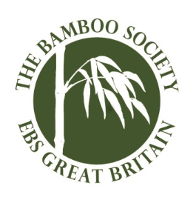The Bamboo Society (EBS Great Britain) Newsletter no. 17 March 1993
SOME RECENT INTRODUCTIONS
David Crampton
By the mid 1960’s the British Isles could boast of some 50 different bamboos in cultivation, though many of these were rare or at least in very short supply.
Lawson, in his book Bamboos (1968), remarked that he would not be surprised if the number in cultivation reached the hundred mark by the turn of the century. Little could he have guessed what was coming in the 1980’s, when there was indeed, a veritable explosion of new introductions!. This was an exciting time for the bamboo enthusiast. Every year, and seemingly almost every month, there were yet more new bamboos coming in from abroad. By 1990 those of us with large collections were describing them as definitive: we thought that with over 100 species and cultivars our collections contained just about all there was to have in the way of coloured stems, variegated leaves and other aspects of horticultural worthiness.
Now, as 1992 draws to an end, and I sit at my typewriter looking out through the pouring rain at weeping vegetation and flooded meadows – whatever happened to the drought? – I am cheered by the thought that the last 12 months have been record-breaking in terms of some really wonderful new bamboos arriving in this country. Space does not permit me to list them all, but readers may be interested to have described those which are likely to be considered the most desirable:
…
Phyllostachys aureosulcata ‘Harbin’
A curious bamboo which has been growing in a garden in the United States for some time, without anyone realising there was anything special about it.
Only when the plant was observed more closely did it become apparent that here was not simply the typical species but a strange variant, not previously known to exist. The typical species, as the name suggests, has a dull yellow stripe in the groove above the node, whereas ‘Harbin’ not only has yellow stripes around the entire circumference of the culm but also a longitudinal wrinkling of the culm surface, recalling Ph. bambusoides ‘Marliacea’. Add to this the tendency to grow in a zigzag fashion in the lower part of the culm, a feature common to all aureo-sulcata variants, and here is a bamboo for every collection.
